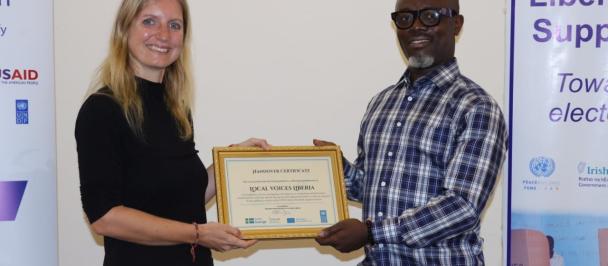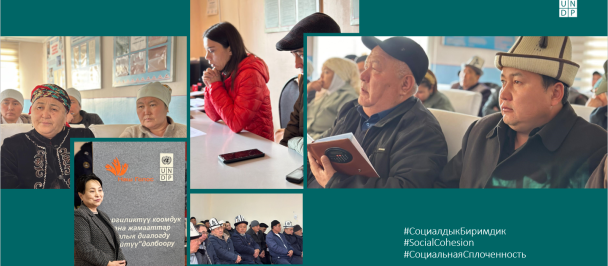Investing in Court Annexed Mediation
July 27, 2022

A Mediator (assistant judge at the Federal First Instance Court) mediating a commercial dispute at the Lideta Mediation Center
Six years ago, a group of neighbours partnered to establish a poultry business. Recently the poultry business has not been profitable, and one of the reasons the neighbours cited for the loss was the reluctance of the three partners to comply with their responsibility as per the memorandum of association. The remaining partners sought to change the business sector from ‘poultry’ to ‘bakery, but the reluctant partners were creating hurdles to the business transition.
These partners failed to appear in the authentication process at the Federal Document Authentication and Registration Agency (FDARA) which requires either the personal appearance of all partners or the court decision for the expulsion of the absentee partners. Therefore, the three active partners have filed a civil suit to expel the reluctant partners from the new bakery business enterprise.
The judge referred the case to the Court Annexed Mediation (CAM). Court Annexed Mediation is a mediation process administered by the judiciary. Mediation is a systematic, interactive procedure in which an impartial third party supports disputing parties in resolving disputes using specialized communication and negotiating strategies.
CAM is a type of mediation where litigants who bring their cases to courts should first try to settle issues in disputes through mediation and if they are unable to effectively settle their dispute the subject is adjudicated in court using ordinary court procedures. If the parties settle their dispute through mediation, they can earn back the court fees that they paid to the court.
For the six partners, mediation was successful, and the three reluctant partners agreed to leave the new partnership and receive their share of the profit(dividend) from the previous poultry business.
Once the agreement is approved by the judge the remaining three partners will bring their memorandum of association to the FDARA for authentication. They will then set up a new bakery business.
CAM
A judiciary that embraces mediation as an integral part of the system will create a more efficient and harmonious dispute settlement process and make the process of moving the matter from the court to the mediator quicker and more efficient. That is why CAM was one of the priorities in the Judicial Reform Program of the Federal Supreme Court.
However, in implementing these reforms, several obstacles were encountered, including the lack of enabling legal framework to implement the CAM. This challenge has been resolved by incorporating specific court annexed mediation-related regulations in the Federal Courts Proclamation 1234/2021, which were drafted through UNDP’s financial and technical support. The expert hired by UNDP to support Judicial Reform Programme was embedded in the Federal Supreme Court to oversee these reforms, and she was also key in the drafting process of these regulations. UNDP was also instrumental in financing all the consultation workshops that helped to obtain inputs to develop the proclamation and directives.
The detailed CAM directive and mediators’ fee directive have been adopted by the Federal Supreme Court in 2021. Based on these legislations, CAM service has currently been established as a ‘directorate’ at each level of federal courts.
For CAM to function efficiently, the services of a mediator are made a formal part of the judicial process by which judges refer the case to a mediator. If the judiciary is in charge of encouraging mediating disputes, people will get the impression that mediation is an additional service to the legal system rather than a competing system.
Over 70 assistant judges have received specialized training skills in mediation with the support of UNDP. An expert hired by UNDP provided professional supervision of the pilot projects, assessments, training and set up of pilot mediation rooms to help transform the pilot CAM project into the sustainable full activity of the courts.
The Vice President of the Federal Supreme Court, Mr Solomon Areda, noted that supporting court-annexed mediation is not only the responsibility of the donors to fund. He said that the government is also keen to allocate more resources to implement different initiatives to enhance the effectiveness of the CAM. The Vice-President said a budget will be incorporated to support CAM in the Federal Courts’ annual general budget.
There are currently around seven civil matters that have been recommended for mediation before they are moved to the litigation process. Cases related to labour, family, commercial, construction, succession, contract, and extracontractual are mandatorily required to go through mediation before going for a full trial. The fundamental principles of mediation, mediators’ qualifications, code of ethics, procedures, and all other aspects have been recognized by the legislation.
* Article by Yonas Girma Admassu (LLB, LLM, PHD), Mediation Coordinator.

 Locations
Locations



